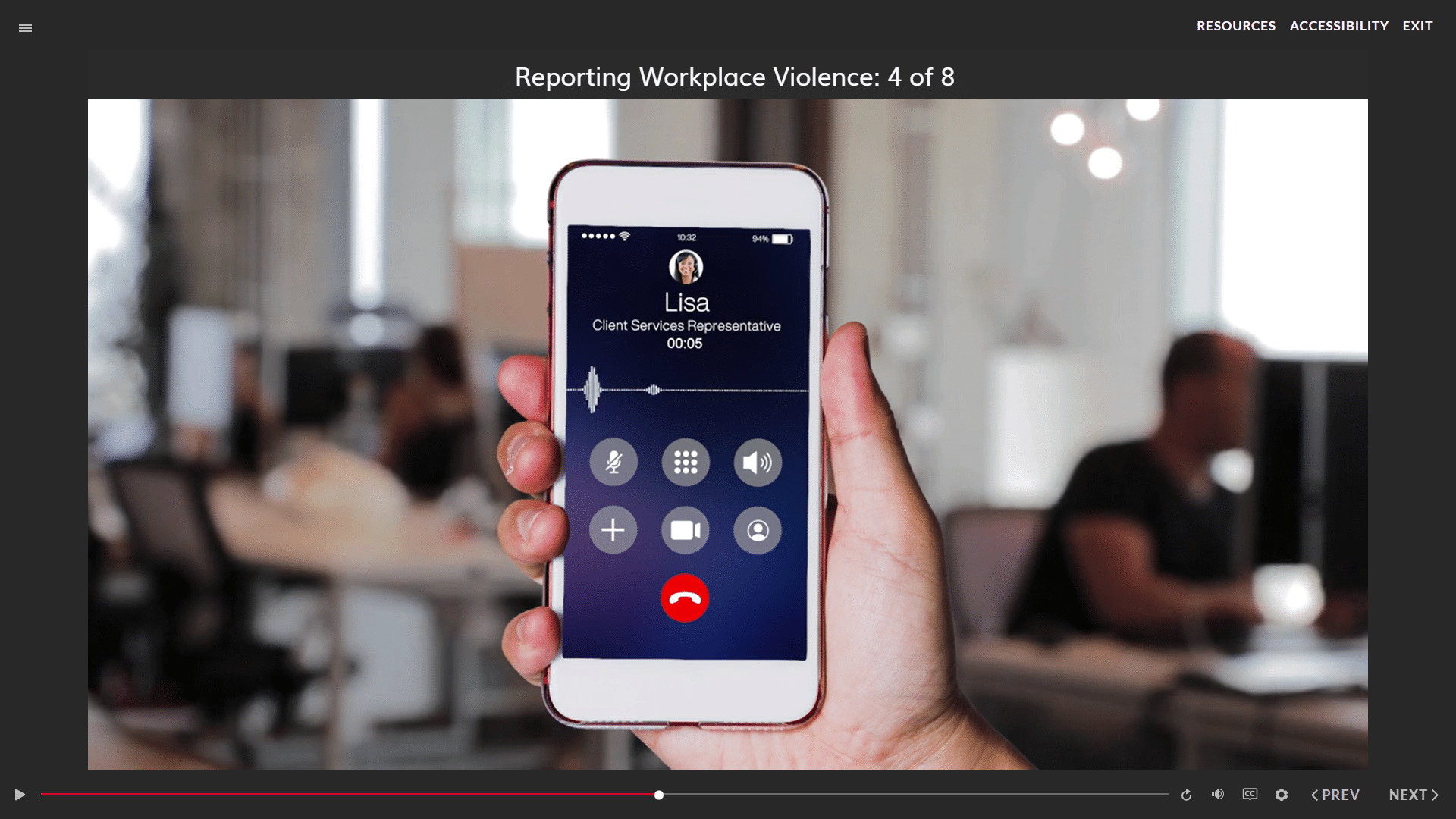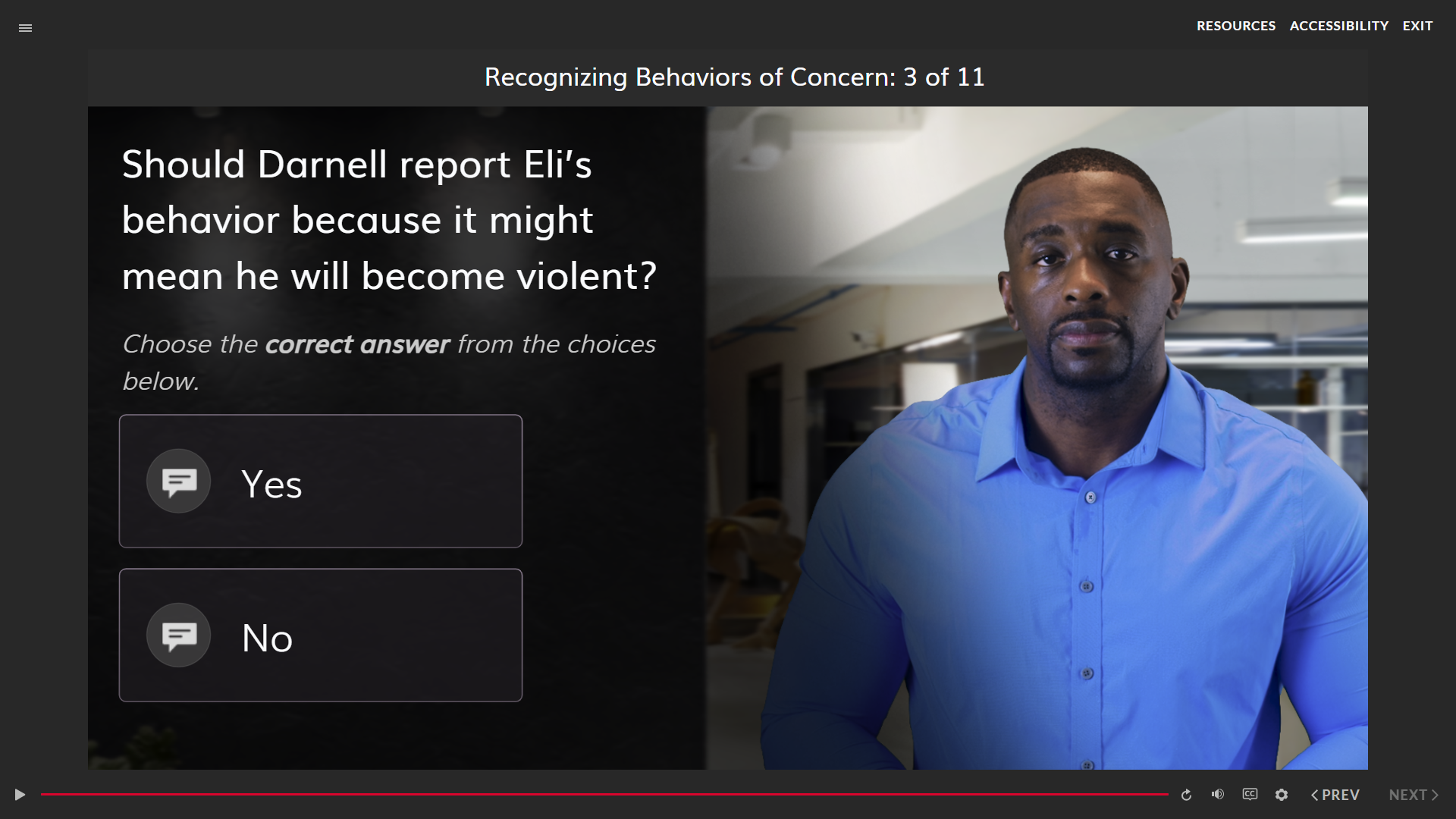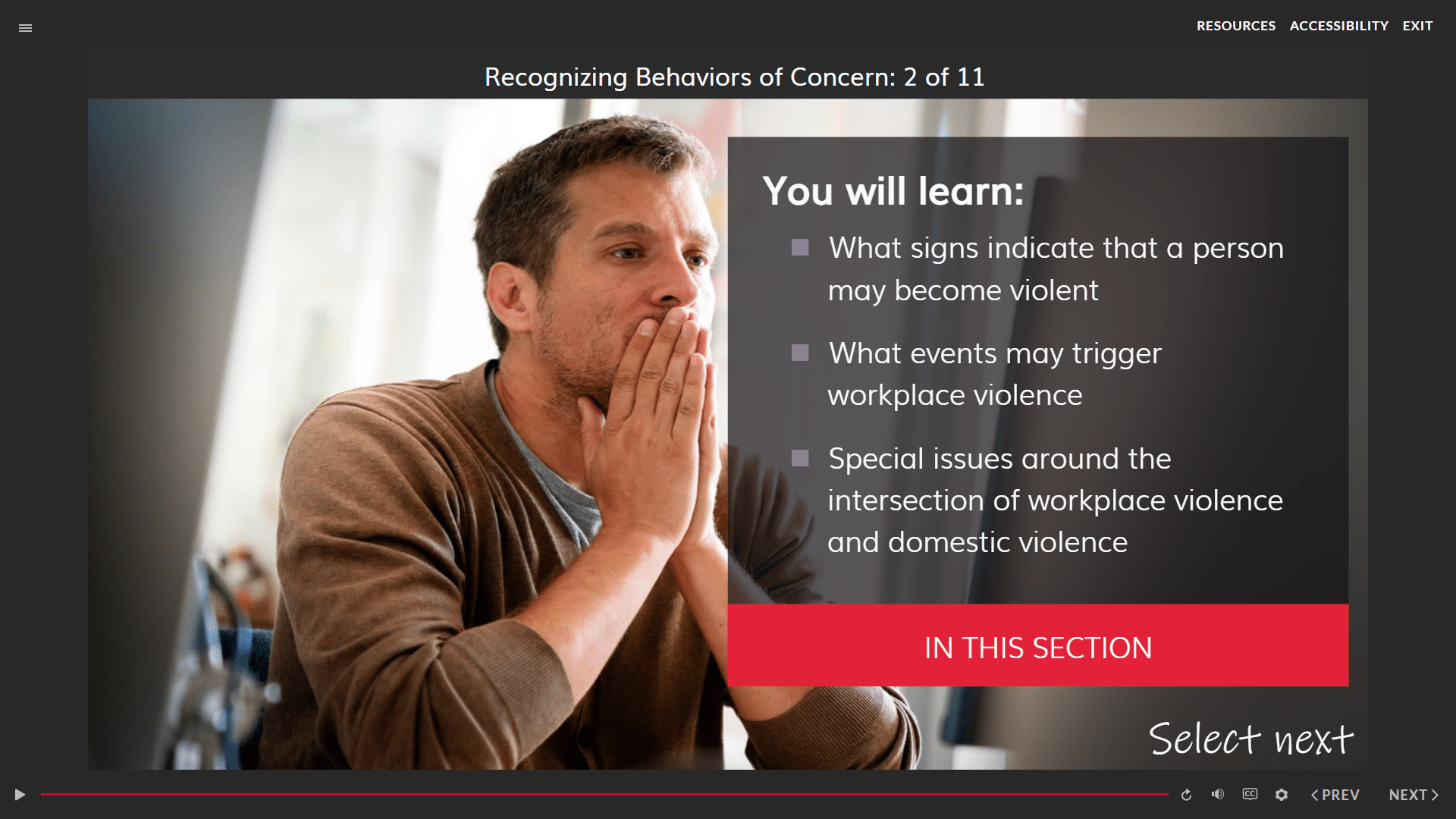California Workplace Violence Prevention
California’s groundbreaking workplace violence prevention law imposes new training obligations on virtually every employer in the state.
Training Compliance
By July 1, 2024, California employers must implement a compliant plan and provide the first round of annual training.
Through a series of interactive scenarios, employees learn about the following topics:
Recognizing Workplace Violence
- Domestic violence and how it affects the workplace
- Knowing when an employee is more likely to become a victim of violence at work
- Recognizing when a coworker has made a threat
- Risk factors and warning signs that a coworker may become violent at work
The Workplace Violence Plan
- Procedures for Reporting Workplace Violence Concerns
- Employer-Specific Workplace Violence Hazards and Corrective Measures
- What to do in a Workplace Violence Emergency
Responding to Potential or Actual Workplace Violence
- How Employees Can Protect Themselves and Others if Workplace Violence Happens
- Using De-Escalation Techniques to Defuse Potentially Violent Situations
- The Workplace Violence Incident Log

Overview
California’s New Workplace Violence Prevention Law
In September 2023, California introduced a groundbreaking workplace violence prevention law, SB 553/California Labor Code Section 6401.9, requiring virtually every employer in the state to develop, implement, and annually train on a written workplace violence prevention plan. The law also requires employers to maintain a log of workplace violence incidents.
Under the law, training must cover specific material, including elements of their organization’s unique workplace violence prevention plan, workplace violence hazards identified by the employer, and understanding all definitions and requirements of the law.
By July 1, 2024, California employers must implement a compliant plan and provide the first round of annual training. Exploring your options early with Traliant will ensure you put your plan into motion in a timely fashion, allowing employees to train at a manageable pace

Online Training
Workplace Violence Prevention Training for California
Traliant’s Workplace Violence Prevention Training for California aligns seamlessly with the state’s training requirements. Our dedicated Compliance Team is available to collaborate with clients to ensure a thorough understanding of the California requirements. Because the law requires that training cover each employer’s unique workplace violence prevention plan in detail, Traliant’s California Workplace Violence Prevention training course is easily customizable.
The Traliant Difference
Proven effective training
Traliant creates modern, interactive training courses to help organizations meet the challenges of today’s workplace. Our courses are designed to be compatible with various employment situations, making implementation simple and stress-free. Invest in the success of your employees and your company through impactful workplace violence training with Traliant

Engaging Instructional Design
A workplace violence program can only be as successful as it is captivating. We’ve seen the power of relatable narratives in preventing workplace violence. Training materials from Trailant combine compelling storytelling and effective designs to boost engagement.
Learn More
Customization
We can quickly and efficiently customize training for your workplace violence program that —addresses your company’s unique work environment and challenges. We’ll curate training around your personalized program with prevention strategies that complement your company’s goals.
Learn More
Accessible to Users with Disabilities
Traliant delivers inclusive and accessible workplace violence training for employees, catering to all users, including those with disabilities. Our commitment to inclusivity is demonstrated by exceeding Section 508-C standards and achieving a level AA ranking with WCAG 2.1 AA.
You may be interested in other courses from the same topic

Preventing & Responding to Workplace Threats
5 courses
Train employees to recognize the warning signs.
5 courses

Equip your culture with the principles of respect, loyalty, and civility, giving your employees the awareness that will guide their creation of a safer workplace and a stronger business.
Help your employees make the right decisions, at the right moments

